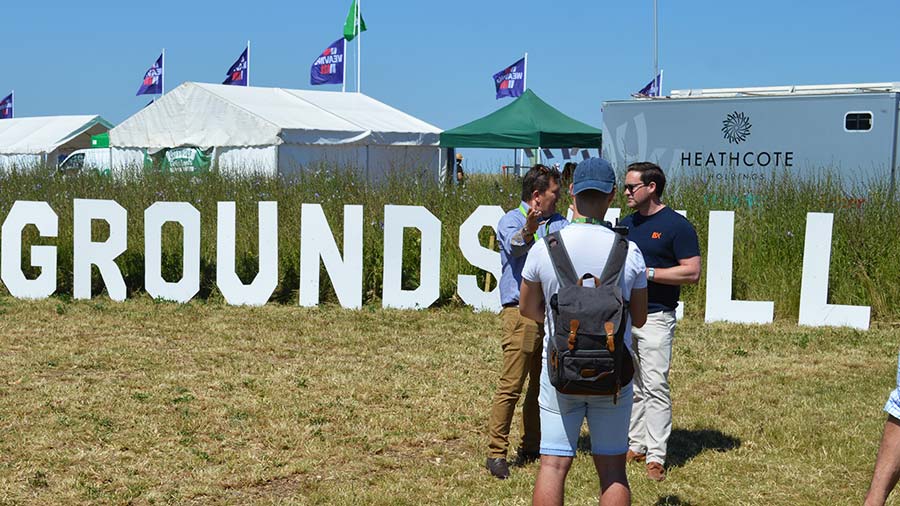Groundswell farmers on route to climate-friendly farming
 © MAG/David Jones
© MAG/David Jones Farmers employing regenerative farming practices gathered at the Groundswell event held at Lannock Manor Farm, Hertfordshire, providing a good opportunity to hear about the different methods they are using in their systems to benefit the environment.
See also: Hamps and Hereford growers named 2022 Soil Farmers of the Year
Grazing dairy cows
The use of grazing dairy cows and stewardship schemes are helping farmers in Dorset and Northamptonshire improve their soils and the environment on the path towards a more sustainable farming system.
Sophie Alexander is using a 300-strong dairy herd grazing for 12 months of the year to bring fertility to her shallow light soils, while Johnny Wake in Northamptonshire is using stewardship to reduce his farming carbon footprint.
Mrs Alexander moved to organic farming in 2014 and without the use of any artificial fertiliser she needed to focus on her soils, and so looked to livestock to make a real difference and integrate them into the arable rotation on her 500ha Hemsworth farm in south Dorset.
“Cows drive the soil health and help improve the crop yields,” she told the Groundswell 2022 event in Hertfordshire.
Dairy cows grazing around the year are seen as an asset in manuring all the ground, bringing in an extra income stream and adding fertility for following arable crops.
She sees the cows “firing up the farm’s ecological engine” while also helping to plug the gap left by the gradual withdrawal of the Basic Payment Scheme of area-based direct farm subsidies.
On the farm, organic spring barley yields average 4.5t/ha and spring oats 5-6t/ha while this year she is growing a Malika wheat and Victus bean mix with the wheat grown for milling and the beans being used as a high protein feed for the cattle.
Conservation agriculture
Dr Wake is managing 800ha of largely heavy land at Courteenhall Farms, just south of Northampton, following conservation agriculture principles, growing arable crops using minimum cultivations and cover crops, managing a poultry broiler unit with 340,000 birds and a herd of Hereford cattle.
These three work together on the estate with poultry providing muck for the arable crops and wheat being fed to the chicken, while the low input Herefords graze non-arable land and are outside throughout the winter.
“We see stewardship as the fourth type of farming and we have just joined a higher-tier Countryside Stewardship scheme,“ he says.
This involves planting hedges and trees, and using AB8 flower-rich margins and plots, AB9 winter bird food and AB15 two-year sown legume fallows.
He also looking to reduce energy use by cutting back on fertiliser and by focusing on renewables with ground source heat pumps being used, as he calculates the whole business on a carbon basis.
Rotation extension
Over to the east, Jake Fiennes has been director of conservation at the 10,000ha Holkham Estate in north Norfolk for three-and-a-half years, and believes that the traditional four-course rotation, devised on the estate, should be extended to include such things as cover crops.
Thomas Coke, who became the 1st Earl of Leicester, perfected his Norfolk four-course rotation on the estate in the early part of the 19th century comprising turnips, spring barley, grass, then winter wheat with his famous mantra of “No two white straw crops one after the other”.
Mr Fiennes sees himself as a “disrupter” to improve nature positive farming for the current Earl of Leicester and the farm management team.
He has helped encourage multi-species cover crops rather than single species ones, more herbal leys, better grazing of the coastal marshes with cattle, more sheep on the farm and lower inputs.

